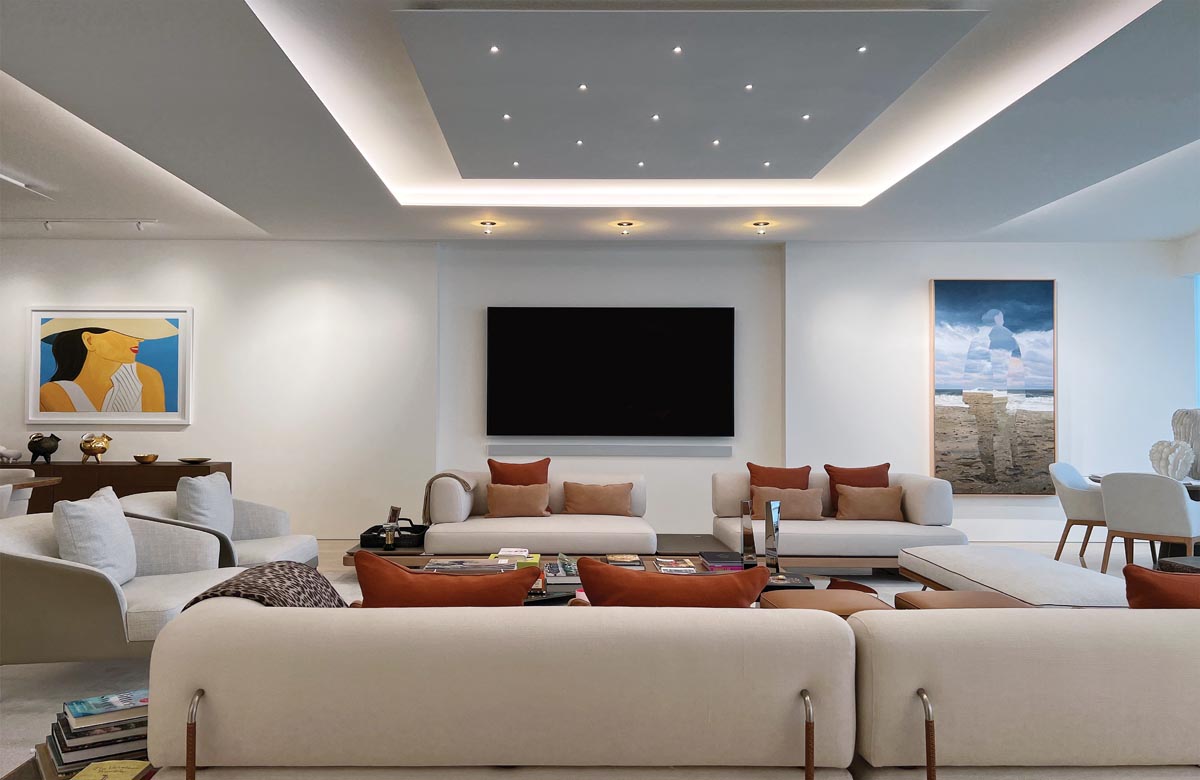Raised all around Europe and now happily established in Miami, Renata Pfuner tackles high-profile projects throughout the world with elements of feng shui, nature, and color theory, which result in residences that are both timeless and individual.
What’s your overall approach to design trends?
I avoid following the ones that have a fast expiration date. The design elements that you see everywhere are the ones that you get tired of looking at next year, but you’ll never get tired of looking at beautiful marble or wood with character. When it comes to decorative items, like an area rug, sure, trends are fine. Just change them often to bring new energy into the space.
What was a recent trend you absolutely detested?
Too many pastel colors on furniture. That’s a great fashion trend, but not when it comes to furniture. Also, I am already tired of looking at all the slatted wood design paneling you see in shelter magazines. That will expire very soon.
What about the other end of the spectrum? What’s a recent design trend you embraced?
Wallpaper. It’s my absolute favorite way to bring character, vibration, and style into a room. The variations to play with are amazing.
Instagram says some of the big design ideas for 2023 will include floral prints, gothic style, girly accents, and dark furniture. What are your thoughts on that?
It sounds interesting, but at the same time very trendy. It sounds more like fashion to me. I would probably incorporate those top design trends into an overall classy and timeless design.
In terms of your design work in Miami, what are clients asking you for?
Natural materials, marble, wood, stone, glass, and the courage to embrace bright colors that reflect the water and sky.
And what would you personally like to see more of?
Designs that understand the power of space for human beings and integrate the elements that have an impact on our mind, body, and soul.
One of the city’s most forward-thinking designers and architects, Oscar Glottman is always one step ahead of the game, a trait that comes with his inquisitive nature about what he calls “the possibilities and variations of the new.”
Are you one to embrace new trends and elements in your design work?
I am an architect by training, so by default I champion the use of the latest advancements in building systems and technology. But I use a more eclectic approach when it comes to decorative elements like finishes, furniture, and accessories. In my work, you will find antiques, ethnic crafts, and other objects used next to the symbols of our time, but always applied for living as we do today.
What’s a recent design trend you absolutely detest?
I find the formation of logos that represent certain fashion and design labels, be it by repetition or in a pattern, as banal and kitsch. We are the victims of substandard and absurd products that mirror our materialistic culture gone awry.
What about one trend you’ve embraced?
The manifestation of virtual reality into real physicality with some fashion trends, such as anime.
Wallcoverings have become almost de rigueur in interior design as of late. What do you make of that?
I like it. I like the manipulation of optics of scale and the incorporation of imagery into architecture. High-definition printing on all types of surfaces is now possible, and that opens the door to all sorts of new experiments in the representation and manipulation of visual effects on walls, flooring, and ceilings.
What are your thoughts on design trends forecasted by platforms such as Instagram?
They are fair game. I would only agree, however, if those big ideas come from an objective analysis of the resulting images of the algorithms rather than from the opinions of a team of analysts that work within the company.
What would you like to see more of, personally?
A continued seamless integration of technology into the rooms that are backdrops for our lives. More use of light as a building material. More flexible living solutions. A bigger separation between surfaces and decoration. More intelligent furniture. And more interactive finishes.
Story Credits:
Text by Christopher Day

















Facebook Comments